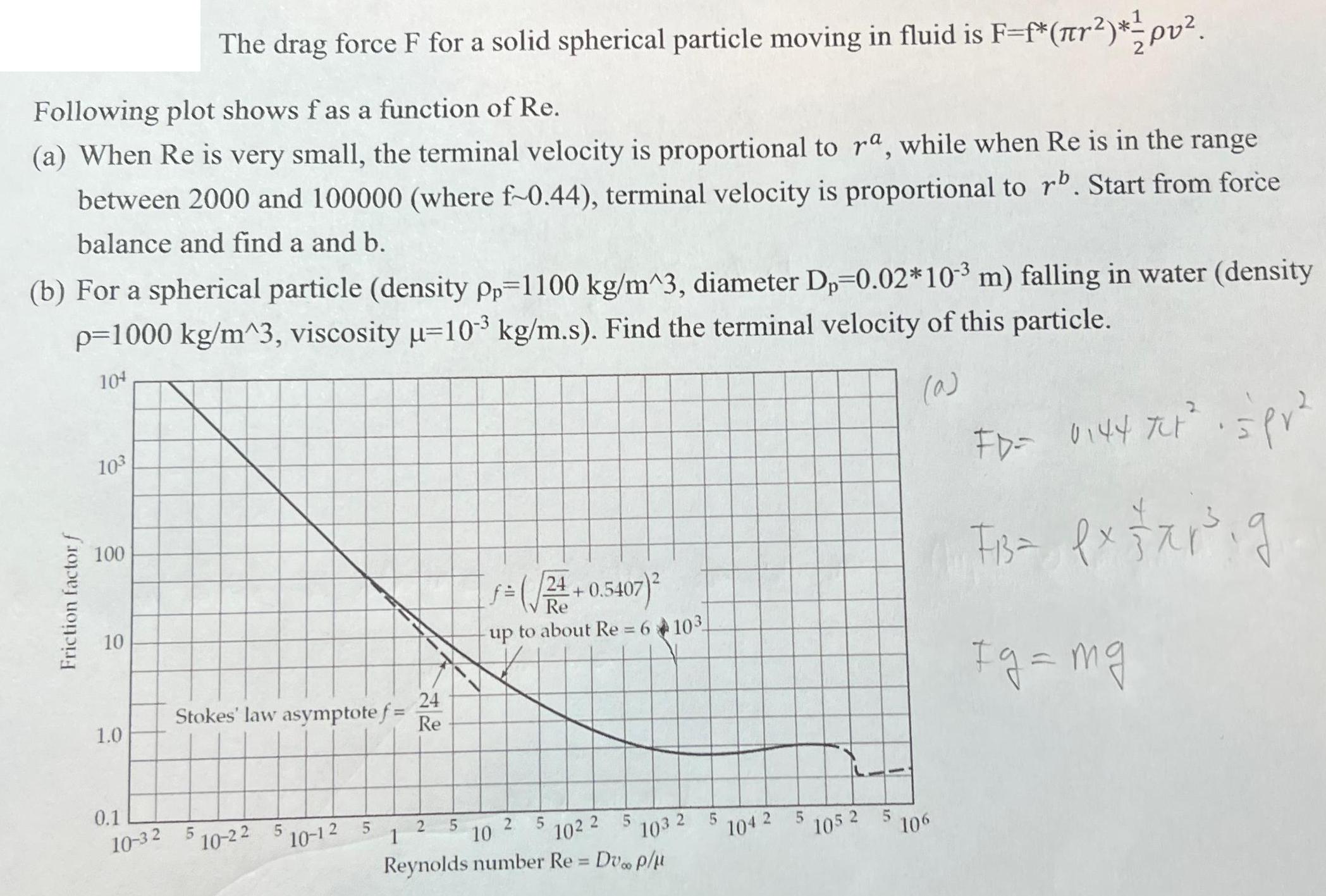Answered step by step
Verified Expert Solution
Question
1 Approved Answer
The drag force F for a solid spherical particle moving in fluid is F=f*(nr)*/ pv. Following plot shows f as a function of Re.

The drag force F for a solid spherical particle moving in fluid is F=f*(nr)*/ pv. Following plot shows f as a function of Re. (a) When Re is very small, the terminal velocity is proportional to ra, while when Re is in the range between 2000 and 100000 (where f-0.44), terminal velocity is proportional to rb. Start from force balance and find a and b. (b) For a spherical particle (density pp-1100 kg/m^3, diameter Dp=0.02*10- m) falling in water (density p=1000 kg/m^3, viscosity =10 kg/m.s). Find the terminal velocity of this particle. 104 Friction factor f 103 100 10 1.0 0.1 10-32 Stokes' law asymptote f = 5 10-22 5 10-12 5 24 Re 1 2 =(/24+0.5407) Re up to about Re = 6103 5 10 5 5 5 103 2 102 2 Reynolds number Re = Dv. p/u 2 104 2 5 105 2 5 106 FD= 0144 721 5 Pr Fs = exfar g Ig=mg
Step by Step Solution
★★★★★
3.42 Rating (149 Votes )
There are 3 Steps involved in it
Step: 1
a When Re is very small in Stokes regime F 6rv Equating drag f...
Get Instant Access to Expert-Tailored Solutions
See step-by-step solutions with expert insights and AI powered tools for academic success
Step: 2

Step: 3

Ace Your Homework with AI
Get the answers you need in no time with our AI-driven, step-by-step assistance
Get Started


